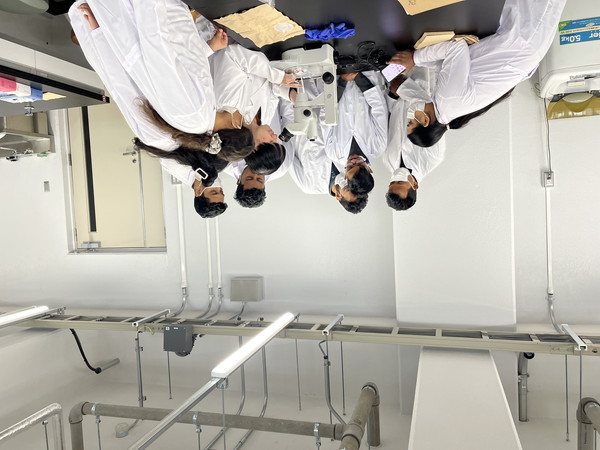The Covid−19 pandemic: where Sri Lanka is now?

Ushani Atapattu, BVSc
University of Peradeniya, Kandy, Sri Lanka
The covid−19 pandemic had caused more than more than 200 million people throughout the world to be infected and succumbed lives of nearly 4.5 million people.1 Even though Sri Lanka had the infection under control at the beginning of the pandemic, with the easing of lockdowns, and other local events, the virus made rapid spread throughout the country.
With rising number of covid infections, the government took various preventive measures to combat the burgeoning issue. One of the main steps was to vaccinate the population at high risk such as health care workers and senior citizens. Five different vaccines, Sinopharm (China), Oxford/AstraZeneca, Pfizer BioNTech, Moderna Spikevax, and Sputnik V (Russia) are being used for the vaccination campaigns distributed throughout the country. At present over 12 million doses are being given as the first dose and 6,517,540 doses as the second vaccinating approximately 30% of the population in Sri Lanka.2
To bolster the covid−19 control, various public education measures were undertaken by means of posters, advertisements, webinars, and mass media on personal protection and prevention of the infection.
The quarantine and prevention of disease ordinance section 2, chapter22 holds the authority to manage and prevent the occurrence of infections and diseases to and fro of Sri Lanka. However, this law did not have sufficient provisions to face a pandemic such as covid−19. Therefore, the ordinance was updated with an extraordinary gazettes No. 2167/18, 2168/6, 2170/8, and 2197/25 to identify covid−19 as a quarantinable disease, to identify the diseased locality, deaths, restriction of movement and guidelines for the public places. Violators of these provisions were faced with fines, arrests, and mandatory quarantine periods depending on the situation. In addition, the country was under several lockdown sessions to control the spread of SARS−CoV2.

Figure 1: Total vs active cases on SARS−CoV2
(Source: COVID−19: Live Situational Analysis Dashboard of Sri Lanka)
https://hpb.health.gov.lk/covid19-dashboard/
The situation moved from bad to worse after the Sinhala and Tamil New Year celebrations in April 2021. The infection and death rate escalated since this time (Figure 1). To make the situation deleterious, the government failed to impose lockdowns at that time and resulted in an accelerated spread of the infection. Superstitions and ill−regulated production of herbal portions by several local Sharman caused public to diverge from science−based covid−19 prevention and control measures. This caused an additional quandary in the public adherence to the recommended covid prevention protocols.
The dire situation of the Sri Lankan economy resulted in suboptimal compliance to optimum covid−19 control and prevention measures as people were challenged with being able to maintain or hold on to their jobs, and their income. Thus, key income sectors such as tourism were forced to attempt to keep functioning despite the pandemic.
With the escalating number of covid−19 cases, the hospitals are now being overwhelmed. There is ongoing scarcity for oxygen, blood, and ventilators in hospitals. Furthermore, few healthcare workers had succumbed to the infection.
As various strains of SARS−CoV2 started to emerge throughout the world, Sri Lanka also received many of these major strains on board from tourists and returning residents from overseas. The most impactful strain was the delta strain of the virus which hasten the spread of the infection throughout the Sri Lankan population. The major urban centres such as Colombo and Gampaha were struck hard with the SARS−CoV2 infection. Furthermore, a triple mutated delta SARS−CoV2 was identified recently from Sri Lanka for the first time in the world. The spread of the virus boosted with the introduction of these new and more potent variants of the virus.

Photo credits: Dr. Jayani Atapattu, National Hospital Kandy, Sri Lanka
In summary, Sri Lanka is currently experiencing the most damaging wave of covid−19 while struggling to keep her economy afloat. The following table will provide an overview of the covid−19 statistics as of 28th August 2021 compared with the statistics of a year ago.
| 28−Mar−20 | 28−Aug−21 | Percent change | |
|---|---|---|---|
| Confirmed cumulative sum of cases | 113 | 421,557 | n/a |
| Confirmed deaths cumulative sum of deaths | 1 | 8,583 | n/a |
| New cases | 7 | 4,596 | ~65,657% |
| Active cases | 103 | 57,580 | n/a |
| New deaths | 1 | 212 | ~21200% |
Table 1: Summary of statistics with respect to infections and deaths due to covid−19 in Sri Lanka at the beginning of the pandemic (March,2020) and at present.
(Sources: Worldometers.info, COVID−19: Live Situational Analysis Dashboard of Sri Lanka)https://hpb.health.gov.lk/covid19-dashboard/
References
1. Worldometers.info. (Dover, Delaware, U.S.A.). Covid−19 coronavirus pandemic. Worldometer. https://www.worldometers.info/coronavirus/#countries. Accessed on 28/08/2021
2. Dattani, S., Ritchie, H., & Roser, M. (n.d.). Our world in data. Our World in Data. https://ourworldindata.org/ Accessed on 28/08/2021




